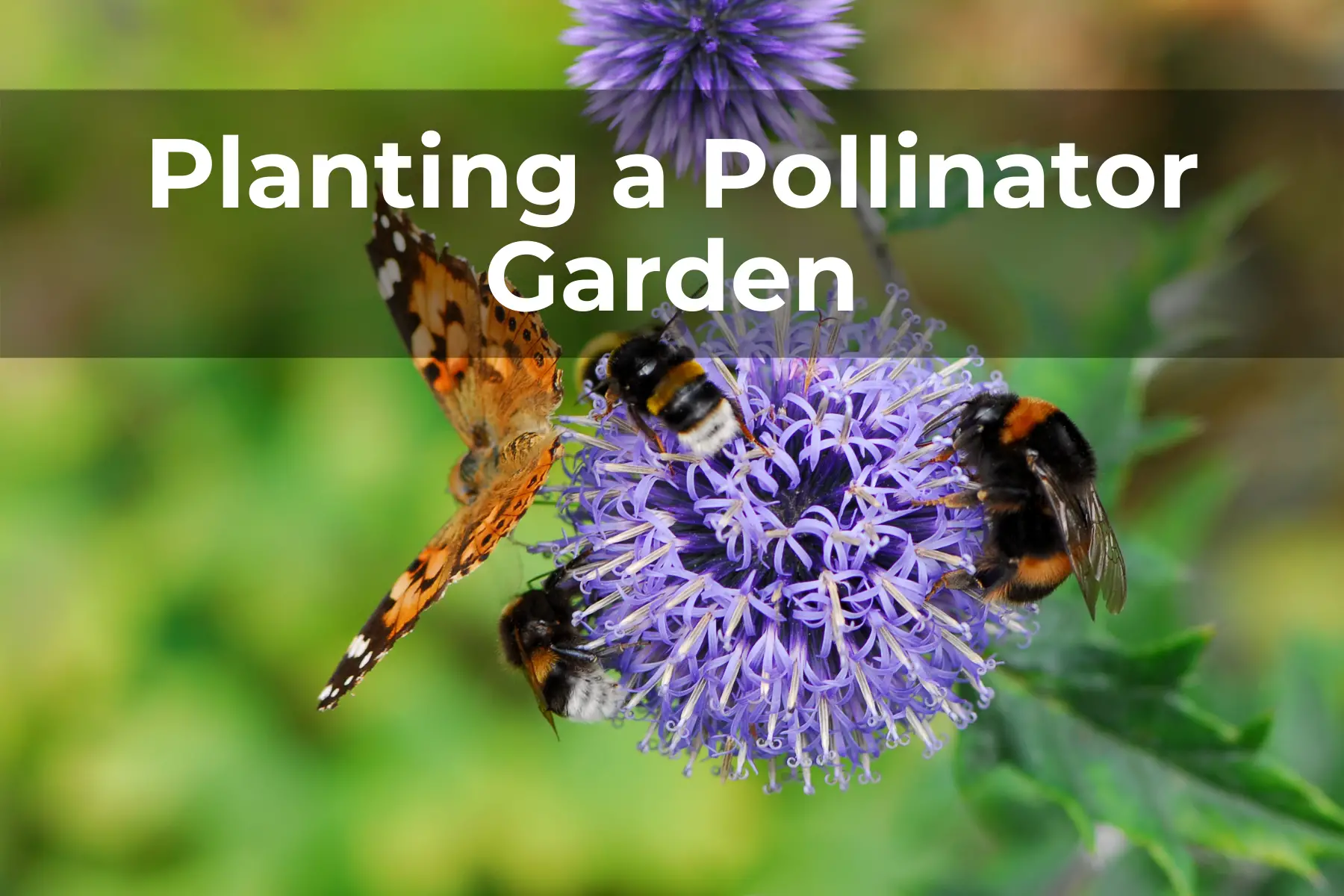Last Updated on April 12, 2024 by Real Men Sow
Our garden and the health of our planet will benefit greatly if we increase the number of plants in our pollinator garden. An entire area that might be devoted to our pollinator plants would be amazing! Planting a small number of pollinator-friendly plants in your yard may have a significant impact on the overall health of the pollinator population.
The Purpose of a Pollinator Garden
A well-designed garden for pollinators can have many uses! We want to attract beneficial insects such as bees and butterflies to our gardens by providing them with a safe environment. However, pollinator gardens are beautiful and offer a lot of opportunities to harvest food as well as herbal medicines.
What makes a good pollinator garden?
Five main goals should be your focus when designing your pollinator garden.
Variety
Although a few plants are better than none, a strong pollinator garden will have many varieties of plants. This attracts many different types of insects, each with their favorite flower! It also provides nectar, shelter, and protection throughout the growing season.
Native-first
Planting native pollinator flowers is the best way to help native insect populations in your region. They are like peanut butter and jelly. It is highly recommended that you focus your pollinator gardens on plants native to your region.
Providing Nectar and Food Through the Entire Season
Insects require food all year. If you plant one flower that blooms only three weeks a year, your garden won’t be able to sustain pollinators. Provide food and nectar throughout the growing season. Bonus: Growing plants that bloom throughout the growing season will make your garden look beautiful at all times.
Provide Shelter For All Life Stages
While most people are focused on providing food/nectar to pollinators through their garden, which is great, just as humans, pollinators need shelter. This can be done via insect hotels and other man-made structures. However, the best way to provide shelter for your insects is to plant native plants as well as leave garden debris to allow them to establish their own homes.
Have a Water Source Nearby
Pollinators require water and you can easily get water from a nearby source, such as a river, lake, river or small creek. If you don’t have access to water, you can make your water source by filling plant saucers filled with stones and refilling them with water. When the pollinators need water, the stones can be used as a landing area.
How Do You Find Native Pollinator Plants in Your Area?
While we’ve spoken about the importance of using native plants in your pollinator garden, how can you find out what’s native to your region? The non-profit organization Pollinator Partnership offers planting guides that are based on your zip code. This is for both the U.S. and Canada regions.
It’s recommended that you either start your native plants from seeds or check in to a local nursery to locate a native-plant-focused one when it comes to purchasing them. Prairie Moon Nursery has the largest collection of native U.S. plant species in the country.
Our pollinator garden plant list
We’ve already mentioned that we would love you to use native plants to grow your pollinator garden. However, every list will be unique. Here is a list of plants that work well almost everywhere.
It is a good idea to check with local guides to find the best varieties for your region. coneflower, for example, is an excellent choice for most areas, but there are 10 species of coneflower that are native to your area. Which one you choose will depend on where and how you live. Have fun planting!
- Aster (Aster spp.)
- Bells/Phacelia (Phacelia spp.)
- Black Eyed Susan (Rudbeckia spp.)
- Catnip (Nepeta spp.)
- Coneflower (Echinacea spp.)
- Lamb’s Ears (Stachys spp.)
- Lavender (Lavandula spp.)
- Oregano (Origanum spp.)
- Penstemon (Penstemon spp.)
- Redbud (Cercis spp.)
- Rosemary (Rosemarinus officinalis)
- Sage (Salvia spp.)
- Sunflower (Helianthus spp.)
- Verbena (Verbena spp.)
- Yarrow (Achilliea millefolium)

